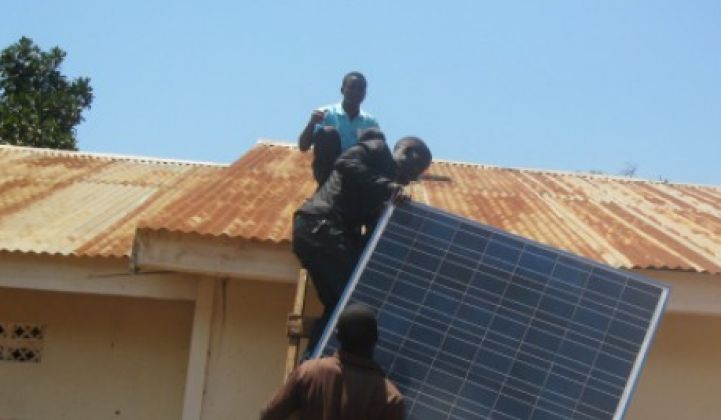The beyond-the-grid industry (a term for off-grid applications in developing countries) has passed through several cycles of development and is entering a new stage of growth in 2015.
This will be the year that supply-side capital and demand-side application meet in a more sophisticated way. Capital sources, including good term debt, are ramping up, and industry companies are becoming more savvy in their deployment approaches.
Last year, approximately $64 million in deals closed for beyond-the-grid players, setting a new record. However, without the help of a formal deal tracker, no one knows for sure. Debt financing could have tipped this to more than $100 million.
With potential for a $13 billion yearly market, those numbers are only a fraction of what's possible.
There are several immediate opportunities that can enable another record year for the beyond-the-grid industry.
Affordable term debt is a key area in which development banks can help grow the market. In the expanding array of development finance, the World Bank Group might consider this offering as a means to stay relevant and on the cutting edge of resolving poverty. It is rumored that a working capital fund is in the works. If so, it would be the first of its kind from a major development bank.
An aggregate house for funneling grant opportunities from family foundations to development organizations would also add phenomenal value, giving beyond-the-grid practitioners a single place to access grants.
On the demand side, beyond-the-grid organizations can use banking products more effectively. Although many companies started out with sizable awards, family money or large seed investments from impact investors, at the end of the day all operate within the same hustle as the local traders and manufacturers that make up our last-mile markets.
One method that local traders use is an overdraft (OD) line of credit with a fixed deposit (FD) counter weight. Here’s how it works.
Separate working accounts can be used to manage specific and strategic monthly burn, such as product procurement. After all, why would we use equity capital for procurement given the cost? The clever thing about an OD line of credit is that the interest rate doesn’t activate until after day 45, when it kicks in at 9.5 percent.
However, if we are shrewd and apply a culture of discipline in the sales team on accounts receivables (AR), then the interest is only a liability for outstanding accounts after day 45. In a trading environment that usually assumes a 100 percent cash-and-carry norm, 45 days is more than sufficient time for collections on any outstanding amounts.
To sweeten the deal, capital reserves can be locked into an FD, which is Indian banking lingo for a savings account. Unlike our customary .5 percent interest in the U.S., India boasts a 9 percent interest rate per annum. This serves as a healthy counterweight.
When it comes to beyond-the-grid market operations, there are a lot of unknowns around commercially viable ground strategies. Attempting many strategies at once to see what works is an imperative. However, the catalyst should not be equity. Grants make the most sense for these high-risk experiments.
Choosing a nonprofit as a partner can create a great R&D lab for the ideas that may not be commercially verified. Given the reduced risk and cost of capital, it’s an ideal choice. Some organizations have done this well already; however, there is always room for expansion and development on streamlining, partnership projects and donor development. Furthermore, the 501(c)3 structure supports another key area for beyond-the-grid players to expand: non-IP knowledge sharing.
Freeing up working capital through leveraging an OD credit line, cheap term debt and downstream credit are all critical for growth this year in the beyond-the-grid market.
Further expansion of funding sources and shorter funding cycles will surely help as well. In the meantime, sharing the results of our non-IP experiments, and creating a one-stop shop for deal flow and for grant organizations will definitely aid in streamlining our efforts on the whole.
These cornerstone developments will help launch the beyond-the-grid industry into its next phase of growth.
***
Daniel Tomlinson is an access-to-energy entrepreneur and 2012 Echoing Green Fellow. In 2009 he co-founded Frontier Markets, a distribution company whose aim is to build scalable clean energy access to last-mile markets in India. Prior to FM, Daniel served as assistant vice president at Drishtee Development in Noida, India. He has also worked at Accenture as an organization change consultant. Daniel has lived and worked in villages in India since 2003, when he was posted in a remote region in Chhattisgarh.



